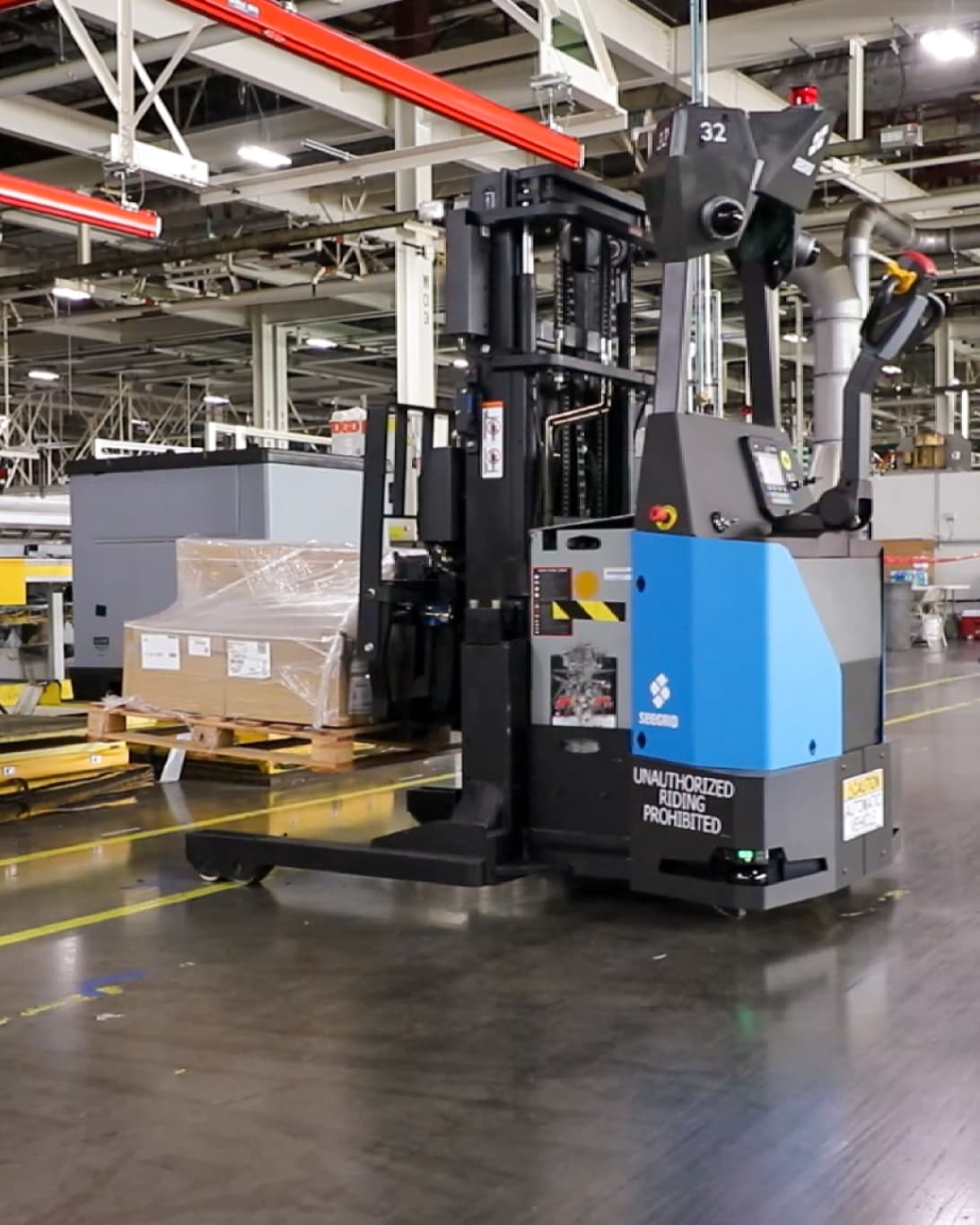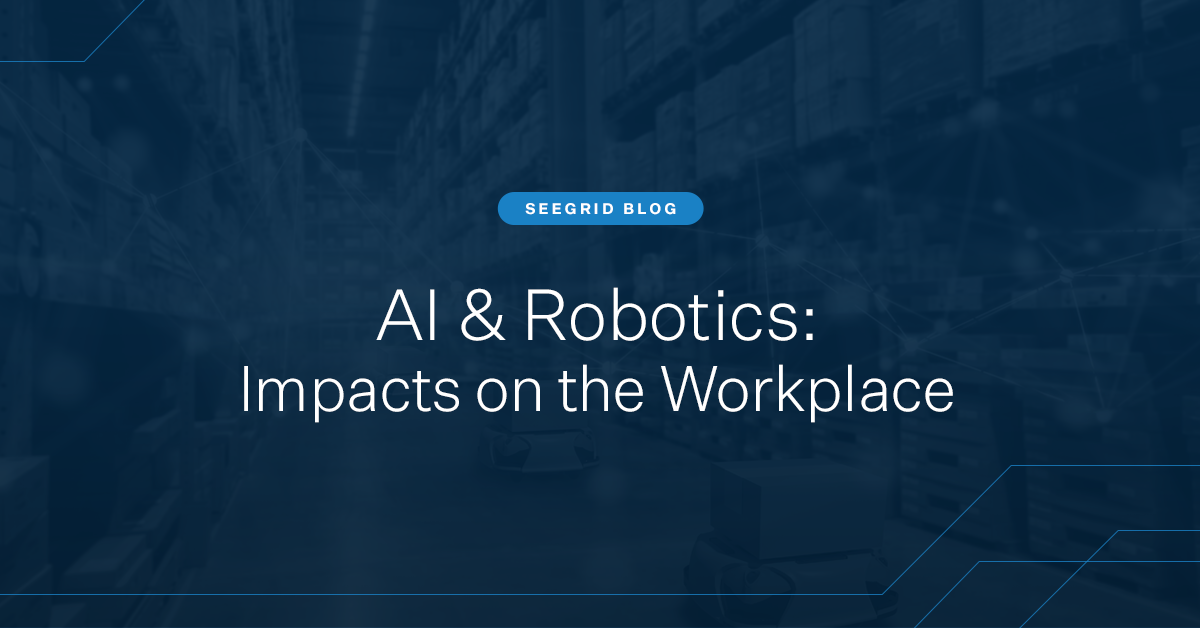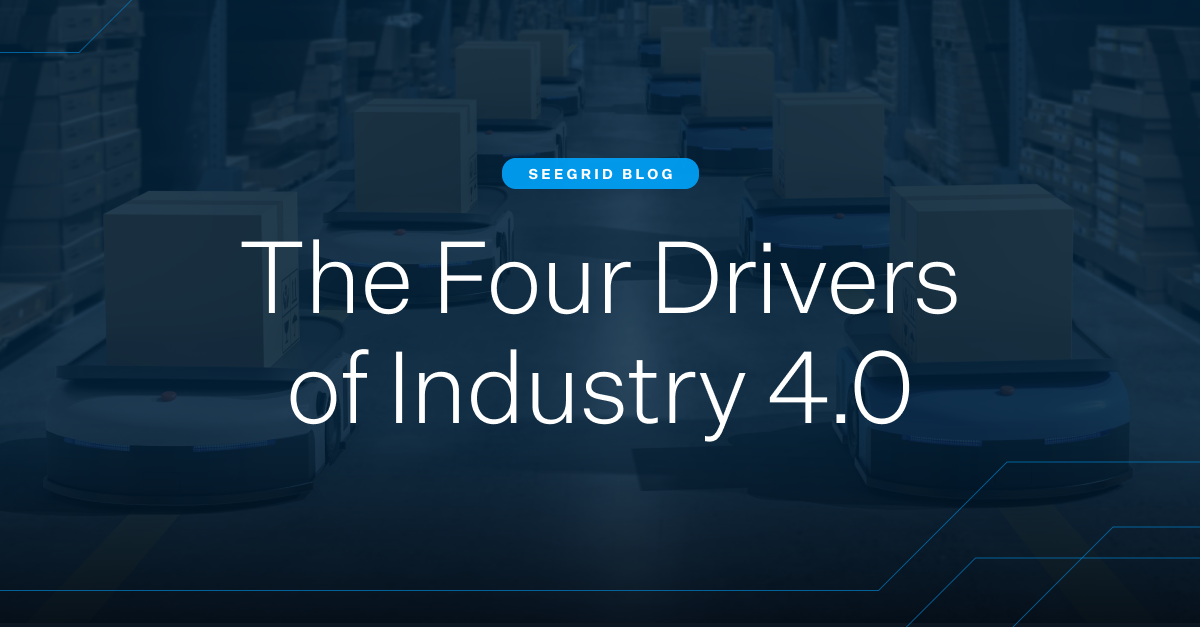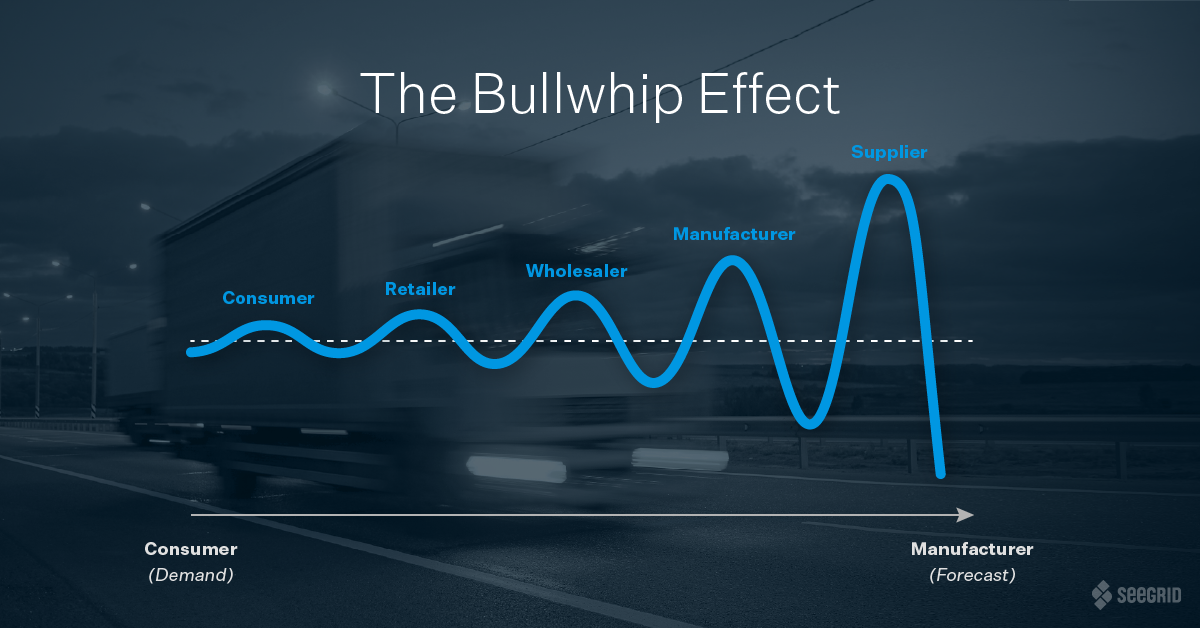Manufacturing, warehousing and logistics companies have long desired to automate the palletized material flows within their facilities. Over time, the technology available to achieve their automation has progressed to a broad set of options: ranging from the highly predictable but infrastructure-laden Autonomous Guided Vehicles (AGVs) introduced 50+ years ago, to the highly flexible, but not as predictable LiDAR/SLAM Autonomous Mobile Robots (AMRs) becoming available today. Many customers, not to mention providers of the autonomous technology, view the benefits of these solutions as an “either/or” decision: the customer can have the predictability of an AGV – or – the flexibility of an AMR.
However, at Seegrid our mission is to provide flexible and reliable autonomous solutions that work in real customer environments. In pursuit of that mission, we develop and integrate all the technologies necessary to deliver solutions that work. As such, we have developed a highly innovative and industry-best technology that we call “Sliding Scale Autonomy”. Using Sliding Scale Autonomy, our AMRs navigate based on the specific needs of the application at hand, ensuring both flexibility and predictability in a single system. One example of the benefits of Sliding Scale Autonomy would be a Seegrid AMR moving with maximum flexibility when approaching to a payload during a pick or a drop, but then with maximum predictability on the often repeated, longer haul travel routes throughout the facility. With Sliding Scale Autonomy, customers no longer need to choose between flexibility and predictability.
About AMRs and AGVs
Modern LiDAR-based Simultaneous Localization and Mapping (SLAM) AMRs are designed for flexibility and adaptability, equipped with advanced sensors and sophisticated tech stacks. Their capability to navigate dynamically through their environment gives them the ability to seamlessly adapt to changing conditions and customer requirements. Modern AMRs are agile navigators.
 AGVs, however, have historically been favored for their reliability and predictability. These autonomous vehicles follow fixed paths that are traditionally defined by physical infrastructure such as magnetic strips, wires, or optical sensors embedded in the facility's floor. They offer ideal solutions for repetitive tasks in structured environments, where their unwavering adherence to predetermined routes minimizes the risk of deviations and ensures a steady, predictable workflow. AGVs are predictability workhorses.
AGVs, however, have historically been favored for their reliability and predictability. These autonomous vehicles follow fixed paths that are traditionally defined by physical infrastructure such as magnetic strips, wires, or optical sensors embedded in the facility's floor. They offer ideal solutions for repetitive tasks in structured environments, where their unwavering adherence to predetermined routes minimizes the risk of deviations and ensures a steady, predictable workflow. AGVs are predictability workhorses.
Seegrid the Pioneer
In 2008, Seegrid was the first company to introduce an autonomous industrial vehicle that navigated with the predictability of an AGV, but remarkably without any infrastructure such as magnetic strips, wires, optical sensors, reflectors, etc. of a traditional AGV. Seegrid pioneered 3D probabilistic mapping technology to facilitate precise indoor localization for vehicles in industrial settings. We still use this technology today—known as the Seegrid Grid Engine—to provide the superior reliability and predictability that our customers demand. It has proven itself again and again, with over two decades of field use in more than 200 customer facilities and over 14 million autonomous miles driven to date. The Grid Engine is an ideal solution for repetitive, long-haul applications, ensuring seamless and efficient operations over extended distances. Whether it's transporting materials across expansive manufacturing and warehousing spaces or navigating complex distribution centers, it excels in maintaining consistent performance and accuracy—always minimizing downtime and enhancing productivity.
Seegrid Innovating Again
In addition to the Grid Engine, Seegrid's autonomous lift trucks are equipped with a second, parallel localization system founded on the principles of LiDAR/SLAM. Our SLAM system can be used standalone, affording Seegrid vehicles AMR-like agility when coupled with our dynamic path planners, or fused with the Grid Engine in real-time providing higher precision pose estimates and fault tolerance while traveling on pre-trained routes.

This capability is particularly vital for autonomous lift truck manipulation tasks, where loads often need to be recognized and picked up autonomously, but may have been placed with less than desired accuracy by a human operator. Seegrid's advanced innovations ensure that our AMRs can adapt to varying conditions and placements to seamlessly align with your existing workflows.
Seegrid's Sliding Scale Autonomy: The Best of Both Worlds
At Seegrid, we recognize that the ideal solution doesn't force facilities to choose between the predictability of traditional AGVs or the flexibility of modern AMRs. Our Sliding Scale Autonomy technology—featured in both Seegrid autonomous lift trucks, the RS1 and CR1—merges these two paradigms to offer a hybrid approach that adapts to the specific needs of the application at hand. By combining AGV-like predictability for repetitive, long-haul global routes using our Grid Engine, with AMR-like agility while handling local pallet manipulation tasks, Seegrid has pioneered a solution where our autonomous lift trucks are optimized to provide AGV reliability in an AMR.
Real-World Application: Autonomous Buffer Management
One of the prime applications of our Sliding Scale Autonomy is in Seegrid’s Autonomous Buffer Management (ABM). Buffer systems within manufacturing and warehousing facilities are critical areas designated for temporary staging of materials or goods, and often require a blend of predictable long-haul travel and agile, dynamic task execution for applications such as: parts-to-line, cross-docking, work-in-progress staging, and shipping and receiving. Effectively building and depleting buffers is crucial for maintaining high levels of productivity and minimizing disruptions. Our innovative technology allows us to treat an entire buffer area as a free-ranging zone using the x-y coordinates, while utilizing train-build-follow methods for travel to and from these zones to enhance overall facility performance.
- Efficient, Long-Haul Travel: For traveling between frequently visited locations, our vehicles use the Grid Engine for predictable long-haul routes, ensuring reliable and consistent movement.
- Dynamic Tasks: Within the buffer area, we leverage our LiDAR-based SLAM technology for flexible, in-zone operations to navigate dynamically and handle short-range applications within the buffer zones such as picking and dropping of goods.
With the ability to adapt to changing conditions and requirements within buffer systems, Seegrid’s hybrid approach maximizes efficiency to enable the RS1 and CR1 lift trucks to handle complexity, all the while maintaining high throughput and making sure materials are always available where and when they are needed.
By combining the strengths of AGVs and AMRs, Seegrid delivers a comprehensive solution that meets the diverse needs of modern material handling for our customers. Our commitment to pioneering new technologies and our relentless focus on customer success continue to drive us forward, setting new standards in the industry for efficiency and ROI.






